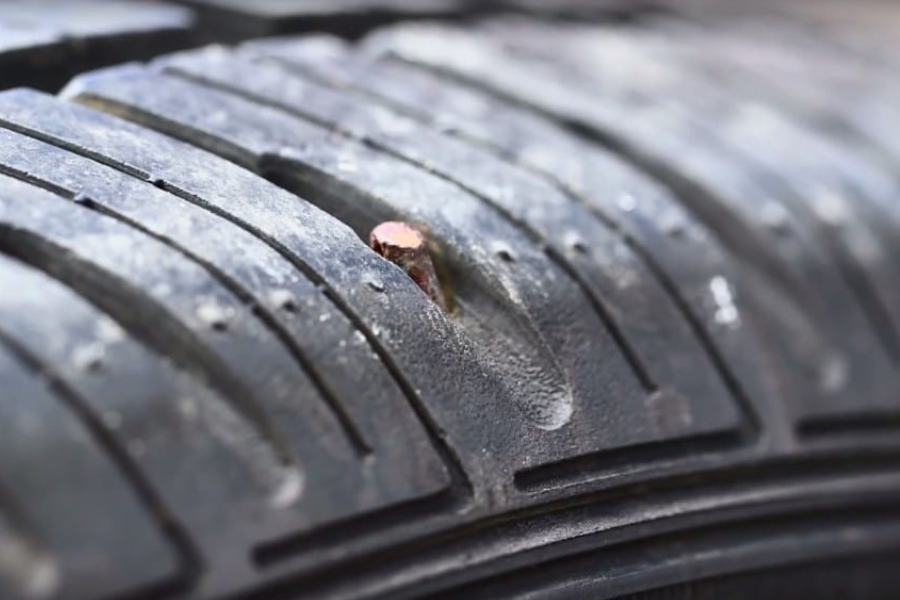This month’s legal update on vehicle roadworthiness, for those who manage drivers, comes to us from Mike Hayward of Woodfines Solicitors.
Fleet vehicle roadworthiness
I’m constantly impressed by my neighbour who does a walk around check of his car before each and every journey. He checks the tyres, cleans his windscreen, and checks all lamps are clean and working. In the hot weather, he covers the windscreen with a deflector cover and in winter an ice cover. He ensures his windows are unobstructed and checks that the car (from what he can reasonably observe) is in decent order.
My neighbour is an airline pilot, and he told me that he would never Captain his plane without doing some final checks, so why not the car that takes him to the airport?!!
Not everyone has the time or inclination to check their vehicle as diligently as the pilot…but we should take responsibility for the vehicle we drive – and as managers of those who drive for work, we should take steps to ensure they are safe when driving. That includes checking the vehicle is in a safe and roadworthy condition of course – a fleet vehicle check list can help with that.
Walk-round vehicle checks
Vocational lorry and passenger drivers are regulated to carry out driver walk around checks, yet the cars and vans we typically use for our personal use, business or commute are not regulated in the same way (yet!). That does not mean you can escape criminal or civil liability if your vehicle is not deemed roadworthy, and you should seek to comply with all laws and regulations to ensure your vehicle fleet is maintained so it is safe, and not used in a dangerous condition. Whether the vehicle is for private use or as part of a business fleet, you should take the legal responsibility for managing your vehicles seriously, but also consider the impact on other road users if the condition of the vehicle could endanger them.
Fleet Managers – your proof of roadworthiness
As a starting point, do not rely on the annual MOT as evidence of proof of roadworthiness. A valid MOT certificate confirms a vehicle has met the minimum standard of roadworthiness at the time of testing but does not guarantee safety for the following 12 months.
Being stopped a month after an MOT test with a bald tyre will not be defended by your showing your MOT test certificate! Instead, the driver will get 3 points and, in this business, points do not mean prizes. They mean increased insurance premiums and the risk of eventual totting up to a ban if you exceed 12 points or more in a three-year period. Every point a driver gets should be treated seriously and avoided where possible. With the amount of driving people do these days, it is no longer rare to accumulate 12 points or more in that period, and that means your driver will be unavailable to you.
Drivers in Great Britain may not travel as far as an airline pilot; however, some 324 billion vehicle miles were travelled on GB roads in the year 2022 – 244 billion of those miles in cars and taxis. 57.5 billion vehicle miles were travelled by light commercial vehicles
Fleet Managers – your checks
Fleet managers should review their driving for work policies and fleet motor policy. It should be checked with their insurers with consideration of factors that may be bespoke to their business when adopting a fleet vehicle risk policy. The below is non exhaustive, but gives some tips for items to be included.
The DVSA says “Check your vehicle is safe to drive.” Simply put, the driver is responsible for making sure their vehicle is always safe to drive (‘roadworthy’). Otherwise under road law they can can be fined up to £2,500, be banned from driving and get 3 penalty points for driving a vehicle in a dangerous condition.
This article is not detailing the rules on HGV and Passenger vehicles as different rules apply, but the standards you set when you chose to be in charge of the vehicle – whether a 40-tonne lorry or e bike should be the same.
Handy guide and links for driver managers
Checks your drivers should carry out:
Every time you drive you should check:
- the windscreen, windows and mirrors are clean
- all lights work
- the brakes work
Your vehicle’s handbook will tell you how often to check the:
- engine oil
- water level in the radiator or expansion tank
- brake fluid level
- battery
- windscreen and rear window washer bottles – top up with windscreen washer fluid if necessary
- tyres – they must have the correct tread depth and be free of cuts and defects
The handbook will also tell you when your vehicle needs to be serviced.
Tyre tread
Tread must be a certain depth depending on the type of vehicle:
- cars, light vans and light trailers – 1.6 millimetres (mm)
- motorcycles, large vehicles and passenger-carrying vehicles – 1mm
Mopeds only need to have visible tread.
There must be tread across the middle three-quarters and around the entire tyre.
Van maintenance
You must keep your van safe to drive. The walkaround checklist shows simple safety checks you can do.
Roadside checks for commercial vehicle drivers
The police and Driver and Vehicle Standards Agency (DVSA) officers can ask you to stop at the roadside.
They have the power to carry out spot checks on your van and issue prohibitions if necessary. A prohibition prevents you from driving until you get a problem with your van fixed.
Police and DVSA officers can also issue fixed penalties if you commit an offence.
Find out about roadside vehicle checks for commercial drivers.
Being self-employed or employing other drivers
By law, employers and self-employed people must:
- assess the risks to anyone who might be affected by their work activity
- take appropriate preventive and protective steps to control these risks
You are responsible for making sure:
- the van is safe to drive
- your drivers are suitably trained, aware of road traffic law, and follow The Highway Code
The Heath and Safety Executive recommend not only practical considerations for employers on how their drivers should be competent and capable of doing their work in a way that is safe for them and others, but vehicles should be:
- fit for the purpose for which they are used;
- maintained in a safe condition and fit for the road.
Employers are encouraged to seek the views of their employees, or their representatives, as they will have first-hand experience of what happens in practice. Getting feedback from employees on the state of their vehicles and expecting them to take pride in them is important. It is better to be critical of your own vehicle and fleet of vehicles than to have a police officer or DVSA enforcement officer telling you in the form of a fixed penalty notice.
Taking steps to be safe for yourself, your passengers and your fellow road users should be a must, not a maybe. Keeping your vehicle fit and safe will hopefully mean keeping your licence safe too.
Mike Hayward of Woodfines Solicitors advises the logistics and passenger sector on all things to do with road law. He and his team also act for drivers in the full range of motoring allegations keeping clients ‘on the road’.






